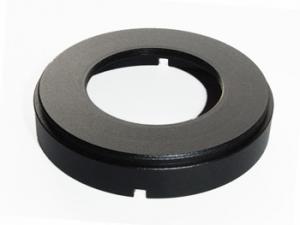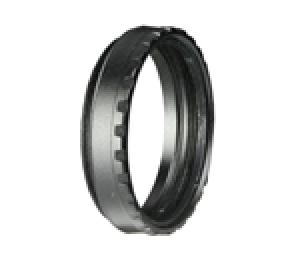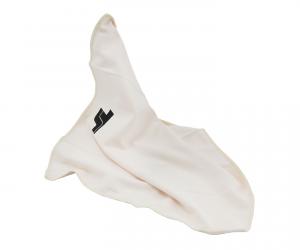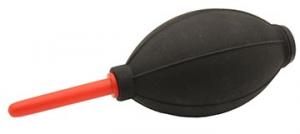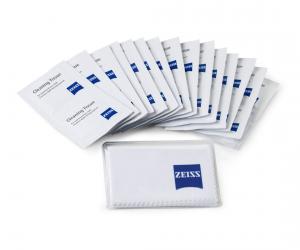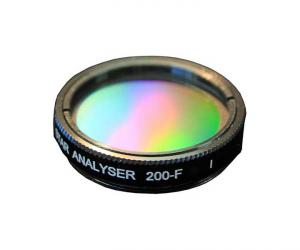- Telescopes
- Overview:
Telescopes - Achromatic Refractor
- Apochromatic Refractor
- Overview:
Apochromatic Refractor - ED Refractor - less color aberration than an achromatic
- SD APO - color free 2-element APO objective
- EDT APO - 3 element ED objective
- High End APO with 3-element APO objective - no color aberation
- Flatfield APO with flat field for Astrophotography
- All Apos and EDs from all manufacturers - large overview
- TS APO and ED from Japan with high quality optics
- Overview:
- Newtonian Telescopes
- Dobsonian Telescopes
- RC Ritchey Chretien Telescopes
- Casssegrain Telescopes
- Reflektor Telescopce with Lens Correcture
- Maksutov Cassegrain Telescopes
- GoTo Telescopes
- Solar Telescopes H-Alpha
- Overview:
- Mounts Tripods Rings Rails Power Supply ...
- Overview:
Mounts Tripods Rings Rails Power Supply ... - Mounts Equatorial with GoTo
- Mounts Equatorial without GoTo
- Mounts Azimutal with GoTo
- Mounts Azimutal without GoTo
- Mounts GoTo - Harmonic Drive
- Travel mounts for astro imaging
- Tripods Piers Polar Wedges
- Mount Control & Electronics
- Dovetail Clamps, Plates and Mount Adapters
- Tube Rings
- Power Supply
- Counterweights Balance Weights
- Mount Accessories - Other
- Overview:
- Telescope Accessories
- Overview:
Telescope Accessories - Eyepieces
- Barlows & Reducer Lenses
- Diagonal Mirrors and Prisms
- Binocular Viewers
- Finder Scopes
- Telescope Collimation and Test
- Cleaning Tools
- Transport and Storage
- Dust protection for Telescopes & Accessories
- Stray Light Protection
- Dewcaps and Heater
- Focusers, Adapters, Motorfocus
- Telescope DIY & Improvement
- Other telescope accessories
- Replacement Parts
- Overview:
- Filters
- Overview:
Filters - Color Filters and Color Filtersets
- Nebular Filters for Visual Observing
- Neutral-Density and Polfilter
- Photo Narrowband Nebular Filters
- Photo Broadband Filters
- Photo Planetary Filters
- Photo R-G-B and IR Cut Filters
- Photo - Filtersets
- Photometric Filters
- Clip Filter for DSLR Cameras
- Filter Wheels and Filterslider
- Solar Filters for white light
- Solarfilter for H-Alpha and Calcium
- Overview:
- Adaptors
- Overview:
Adaptors - Adapter 1,25" and 24,5mm
- Adapter 2"
- Adapter T2 - M42x0.75
- Adapter M48x0,75
- Adapter M54
- Adapter SC
- Adapter M63
- Adapter M68
- Adapter to other Threads
- Adapter Extensions
- Adapter camera bayonet
- Adapter Objective Filterthread
- Adapter Quick Changing , Rotation
- Adapter Eyepiece Projection
- Adapters Tilting
- Overview:
- Astrophotography and Photography
- Overview:
Astrophotography and Photography - Cooled Cameras
- Cameras without Cooling
- Deep-Sky Cameras uncooled
- Set-Offers Camera, Filter, Wheels
- Acessories for Cameras
- Travel mounts for astro imaging
- Imaging Correctors for Telescopes
- Autoguiding Cameras & Sets
- Everything for Guiding
- Focusing aids - Bahtinov mascs
- Flat Field foils and boxes
- Lenses for Cameras
- Piggyback Camera Holder
- Camera Bags, Photocases & more
- Digital Camera and Smartphone Adapter
- Other photo accessories
- Overview:
- Binoculars, Spotting Scopes, Microscopes, Range Finders
- Overview:
Binoculars, Spotting Scopes, Microscopes, Range Finders - Roof Prism Binoculars
- Binoculars with Porro prisms
- Binoculars from 100mm Aperture
- Binoculars with 1,25 inch eyepieces
- TSMX APO Binoculars
- Binoculars for Astronomy
- Binoculars Hiking Bird watching
- Monoculars - Opera Binoculars
- Accessories for Binoculars
- Spotting Scopes
- Range Finders
- Microscopy
- Bags for Phototripods & Binoculars
- Overview:
- Phototripods and Binomounts
- Books, Software
- Overview:
Books, Software - Books for Astronomy Beginners
- Star Charts and Planispheres
- Books about our Solar System
- Observing Tips for Amateurs
- Popular Astronomy Literature
- Teaching material
- Astrophotography books
- Telescopes, Observatories, Construction
- Calendars Yearbooks
- Software, Star Charts
- Books for Microscopers
- Books Nature and Animals
- Nature Photography TimeLapse
- Overview:
- Night Vision, Magnifiers, Weather, Domes & more
- Beginner Astronomy and Gift Ideas
- Second Hand & Special Offers
- New products
Manufacturer: Paton Hawksley
Product number: StarAnalyser
EUR187.00new
EUR 187,00
incl. 19 % VAT (DE)
The VAT indicated refers to that applicable in Germany. After logging in, the VAT amount is adjusted to the applicable VAT of the stored delivery country. Therefore, the final price may vary accordingly.
excl. 6.95 € shipping costs (DE)
more details to the shipping costs ...Please log in to calculate shipping costs to your country.
rating: 4.0 of 5Paton Hawksley Spectroscope StarAnalyser 100 - blazed diffraction grating for spectroscopy1
- Details..
- Technical data..
- In the box..
- Reviews..
Paton Hawksley Spectroscope Star Analyser 100
In professional astronomy, spectral analysis has been the means of choice for researching stars, nebulae, novae, comets and much more for over 100 years. With the Star Analyser, Paton Hawksley now offers a very inexpensive and easy to use system, which is aimed especially at amateur astronomers, observatories, schools and the general entry into the fascinating field of spectroscopy.The Star Analyser is simply mounted like a 1.25" filter in front of a camera. In principle, any camera can be used for this purpose. For example, it is possible to use a telescope with an aperture of 80 mm and an unmodified webcam to spectroscopically capture stars up to the 4th magnitude. With 8" aperture and a sensitive astro CCD camera, hundreds of deep-sky objects are at your disposal to explore. Even the redshift of quasars can be detected in this way!
Tips from Teleskop-Service:
In principle, any telescope is suitable for spectroscopy. Reflector systems (like Newtonians and Cassegrain systems) as well as refractors with low chromatic aberration are ideal. With so-called rich-field achromats, however, a little caution is required, since their own color errors can make the spectrum obsolete.For cameras with an integrated IR cut filter, please note that this cuts off the long-wave part of the spectrum. With pure reflector telescopes no IR cut filter is necessary anyway, this can therefore be removed.
When using it visually, please note that the Star Analyser 100 fans out the spectrum less than the Star Analyser 200, making it appear brighter. Therefore it is usually more suitable for this application. But the latter has a higher resolution and needs only half the distance in photographic use.
Valuable link:
The freeware program Visual Spec can be downloaded here:| Type of construction: | Blazed diffraction grating |
| Application: | Spectroscopy |
| Connection: | 1.25" filter thread |
| Cell: | Aluminum |
Star Analyser field report - by H. Dr. Erik Wischnewski - Kaltenkirchen, 25 February 2013
Dear Mr. Ransburg,
some months ago I bought the blazed grating Star Analyser 100 (STA) from you and could achieve some results. I would like to report briefly on this.
The STA was used both as a lens grating in conjunction with my zoom telephoto lens 70-300 mm and slitless prefocal in the direct beam path of the 5" ED apochromat which I bought from you at the time (I still do not regret the purchase). I had Gerd Neumann make an adapter ring for me for use as a objective gratinge and now screw it into the filter thread of the lens.
I also used a Canon EOS 60Da. I mainly took pictures with the telephoto lens on a normal photo tripod. Bright stars up to 1 mag can easily be achieved at ISO 1600 with exposure times under 1 sec. The addition of 10-20 images, as known from general astrophotography, makes sense. Additions of 20-25 images at 2 sec. each (at ISO 1600) also enabled beautiful spectra up to the 5th magnitude.
With the 5" ED apochromat (f/7.5) at ISO 6400 and 30 sec. exposure time spectra of stars of brightness 11.0 mag are detectable. However, these spectra are very noisy and can no longer be used for line recognition. This succeeds on the same shot with stars brighter than 8.8 mag, which corresponds to the above estimate.
I was able to spectroscopy Wolf-Rayet stars as well as the famous Be stars P Cygni or Gamma Cassiopeiae. These stars show emission lines of concise clarity. WR and Be stars also show strong variations in the spectrum, making continuous monitoring interesting. The measurement of the equivalent width is one of the scientific tasks normally not attributed to an STA. I was able to achieve sufficiently accurate results here: for P Cygni an equivalent width EW in H-beta of -14.0 ±1.3 Angstroms and in H-alpha of -76.0 ±2.4 Angstroms was obtained on 6.10.2012.
The blazed grating StarAnalyser 100 is therefore more than just a demonstration part for school purposes.
Working with the STA has been a lot of fun for me so far. The blazed grating was definitely worth its money. As a side effect, it was important to me that unlike deep-sky photography, you don´t necessarily need many hours of clear air and dark skies. A short-term cloud gap is enough, light haze is not so dramatic and moon does not disturb as much as with deep-sky images of weak nebulae and galaxies.
I evaluated it with Fitswork and the possibility to create a pixel line. The determined values can be copied directly from Fitswork to Excel for further processing. But I wrote a small program with it.
In the appendix I have added some pictures without comment.
Many greetings
Dr. Erik Wischnewski
 Spectra Star Analyser Wischnewski 1
Spectra Star Analyser Wischnewski 1 Test result Staranalyser Dr. Wischnewski
Test result Staranalyser Dr. WischnewskiRecommended accessories
Adaptors
Cleaning & Collimating
TS-Optics Optical Super Microfiber Cleaning Cloth
EUR 5,99RRP EUR 7,95you save 24.7% (EUR 1,96)
Similar Products
Reviews
Written by Risto Saraste
on 2022-03-22
"I have to get more experience of the product in order to give an exact evaluation"
Written by Jürgen Kahrs
on 2016-07-01
"Wo bekommt man ein Beugungsgitter für die astronomische Spektrometrie, gar nicht so einfach, hier gabs das und die Bestellung war einfach, Lieferung schnell"








